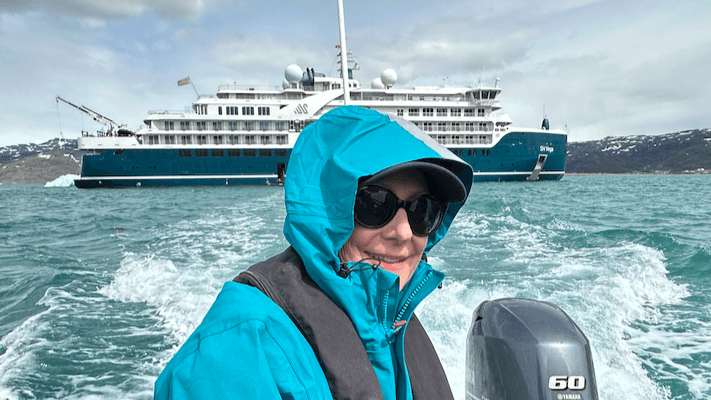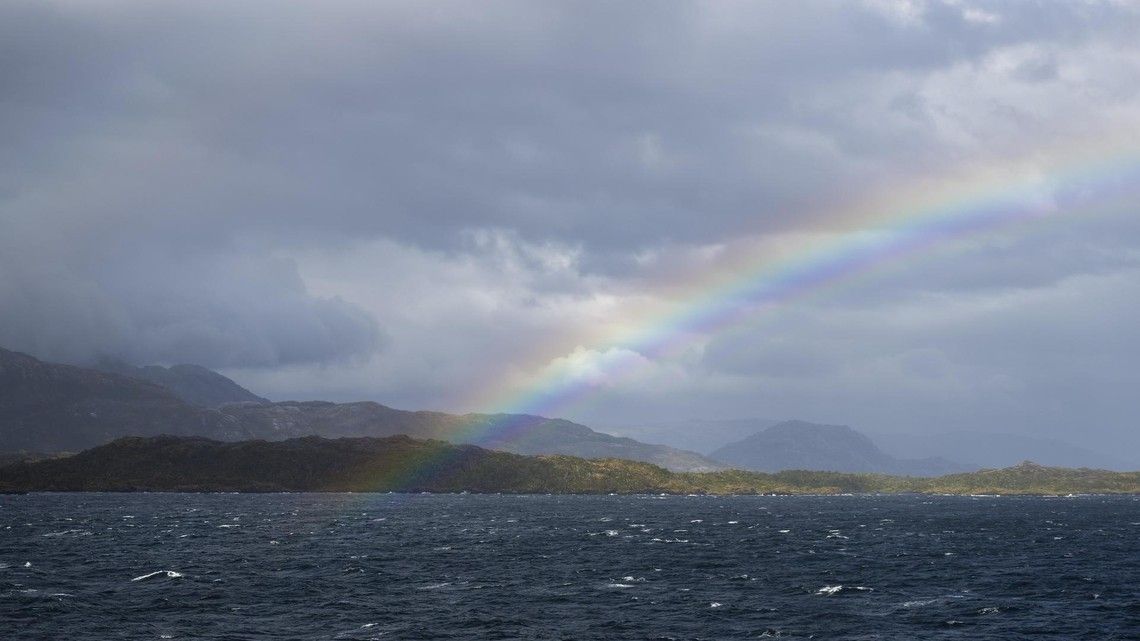"Science is skeptical, always examining the processes and findings that are dependent upon the relationship between science, engineering and society."
"With the study of extremophiles, the search for life beyond Earth is happening all around us."
Curious travelers often dream of space, but Pamela Harman has made a career out of searching for life beyond our planet. From wastewater treatment to radio telescopes, her path to the SETI Institute has been anything but straightforward. Now, as Director of Education at the SETI Institute and an expedition lecturer with Swan Hellenic, Pamela blends science, storytelling, and curiosity to illuminate the cosmos for everyday explorers…
You began in civil engineering. What led you to the SETI Institute?
Pamela: A series of events and opportunities led me to where I am now, and my current roles. I worked in municipal construction – bridges, hydroelectric plants, water treatment facilities – and then took a break to substitute teach physics. I realized how important it is to make STEM exciting for students and earned my teaching credential. Then, later a colleague at San Francisco State asked me to join a curriculum development proposal funded by the National Science Foundation. I contributed to the "Evolution of Technology" module, and eventually piloted lessons in my classroom. Another move was in my future, so I accepted a one-year job offer to continue working on the curriculum, and that turned into 26 years of writing proposals, and developing educational resources!
What first sparked your curiosity about life beyond Earth?
Pamela: As a child, I had that moment when I realized the sun is a star – and that the stars in the night sky are so much more than just a point of light, they are the center of other solar systems. Then I looked up at the stars and wondered, is their life on planets around those stars?
Looking back, do you see a clear path from engineering to astrobiology – or was it more unexpected?
Pamela: It’s the technology – the instruments and engineering that are required to develop instruments, telescopes, rovers, sounders, launch vehicles – that connect the dots on my journey.
How did you discover astrobiology, and what pulled you into it?
Pamela: My first exposure to astrobiology was in the early 90’s when I attended a museum science presentation. I was drawn to the big question: how do we detect life? The technology behind that question is what engaged me most.

Seeing the invisible
Multiwavelength astronomy sounds complex. What surprising discoveries come from studying non-visible light?
Pamela: Infrared astronomers study the earliest stages of star formation, peering through dust clouds to study protostars, debris disks around stars, and supernova explosions – things we couldn’t study before infrared telescopes. NASA SOFIA observations confirmed the presence of water on the sunlit portion of the Moon, indicating that water may be distributed across the lunar surface. Gamma ray astronomy helped identify various energetic objects like blazars, pulsars, and active galactic nuclei. And SETI is conducted in the radio wavelengths (mostly) where detection will be most profound.
How does technology help us study objects millions of light-years away?
Pamela: We can’t travel vast astronomical distances, but spectroscopy helps us analyze light – visible and invisible – to investigate chemical composition. A rainbow is a visible spectrum broken into its component wavelengths that we see as colors. Analyzing similar spectra from distant objects reveals what stars, planetary atmospheres and surfaces are made of.

Worlds beyond Earth
What are the most promising places for life in our solar system?
Pamela: Europa and Enceladus – moons of Jupiter and Saturn – are the most promising. They have liquid water, nutrients, and energy. Life as we know it requires water. Mars is another; it was once clearly very Earth-like. Could the detected methane source be a life form (not likely but an interesting possibility)? Other less likely candidates include Triton, Venus, Titan and Ceres.
What are extremophiles, and why are they important in astrobiology?
Pamela: Extremophiles are fascinating – they are organisms that thrive in Earth’s harshest environments! Since we can’t study solar system environments directly, we study extremophiles to predict where life might survive and how we might detect it.
How has your view of life changed since joining the SETI Institute?
Pamela: I've learned that life thrives in bizarre environments – and we’re still defining what life is. I think more now about how life and planets co-evolve.
What misconceptions do people have about SETI?
Pamela: That we’re looking for little green women. We're not. We're looking for technosignatures and biosignatures – scientific evidence of life, not science fiction.
With space exploration evolving quickly, what changes do you see ahead for SETI and astrobiology?
Pamela: Advancing missions will lead to discoveries we can’t even imagine today!

Inspiring the next generation
You work closely with students. What’s most important in nurturing STEM professionals?
Pamela: Give them skills, experience, and mentorship, and then get out of their way!
What excites you about bringing your lectures aboard Swan Hellenic cruises?
Pamela: Expedition cruise travelers are by nature curious people, open to new experiences and new ideas and information! I hope guests take away that the search for life beyond Earth is happening all around us. And that SETI is real science.
Why have the Moon and Mars captured human imagination for so long?
Pamela: They’re visible to the naked eye, and are viewed by everyone on Earth. We all have those objects in common, so they appear in the arts, language, graphic and performing arts. The Moon’s phases mark time. And Mars moves and glows red, inspiring stories and myths.
How do other sciences – like chemistry or philosophy – fit into astrobiology?
Pamela: Chemistry, geology, and biology are interconnected. We have to understand the bio-chemistry of life through the lens of an evolving planet and the availability of water, energy and nutrients. Philosophy in science is the examination of its foundations. Science is skeptical, always examining the processes and findings that are dependent upon the relationship between science, engineering and society.
What advice would you give to someone just beginning to explore space?
Pamela: Find a friend, or a few friends, to explore topics with. Talk about what you think, what you learn, and what you wonder. We learn best together.
